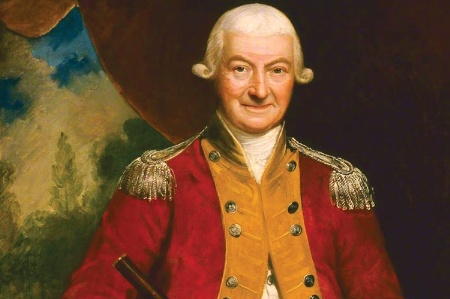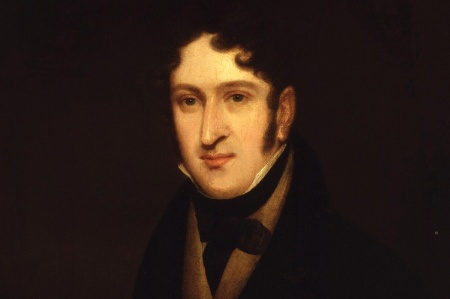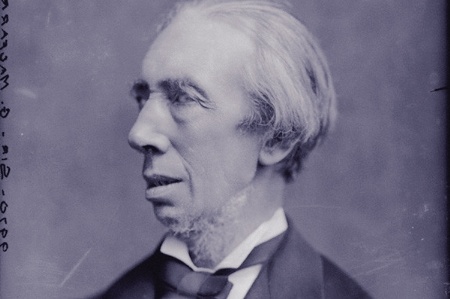Music and the ‘Mickey Mouse’ degree debate
Times Higher Education, 10 OCTOBER 2013
Discord over vocational and theoretical aspects of music study in the 19th century still resonates in today’s debates about higher education’s purpose

SOURCE: UNIVERSITY OF EDINBURGH
Prelude: General John Reid’s bequest was to enable the University of Edinburgh to establish a professorship of the theory of music
As anyone who has ever been accused of teaching a “Mickey Mouse” degree course will know, creating a new academic subject and winning credibility and respect for it are not easy tasks. Traditional subjects face challenges, too: in the modern world, demands for relevance, “employability” and “transferable skills” are changing the face of some long-established disciplines. Such pressures to conform are nothing new, however, as illustrated by my research into music’s place and identity in higher education during the 19th century.
Music was not a new degree subject at the time, but it bore little resemblance to the discipline as we know it today. Degrees in music had been awarded at Oxford and Cambridge since the 15th century, and professorships founded in the 17th. But universities provided no tuition, and did not even expect students to be resident or to enrol at a college. Nor was there a requirement to obtain the basic general education required for all other degrees. Music degrees were based on composition alone, and there was no formal written examination.
It was during the 19th century, though, that music as a university discipline began to receive attention in the UK. One of the key reasons for this was the low social status of music performers and composers at the time. The music profession was unregulated, and employment was unreliable and poorly remunerated. Many of those who cared about music’s position in society argued that graduates should be required to form a closer connection with universities: this would improve standards and raise the status of the profession. Such concerns were further fuelled by a musical revival in the Anglican Church.
Rebranding music as a liberal subject was designed to increase its appeal among the upper classes and to increase participation and patronage
The result was the “academicisation” of music in universities during the second half of the 19th century. Music was increasingly brought into line with other degrees through the introduction of written examinations and, eventually, general educational requirements and compulsory residence.
The first institution to address the idea of music as an academic subject was not driven by concerns over musical standards, however: it was prompted by money, in the form of an endowment. General John Reid left a large fortune to the University of Edinburgh with the intention of setting up a professorship of the theory of music. When the sum arrived at the university in 1837, the professors and trustees of the university set about defining the study of music in a way that would fit the university’s existing curriculum and identity.
Edinburgh’s reputation was built on science. The trustees understood “theory of music” to exclude practical tuition in performance, but there was little precedent elsewhere for teaching the elements of music familiar in departments today, such as history, aesthetics or analysis. In other institutions, musical acoustics had been studied from a wholly scientific perspective, but there were no university curricula or degree courses to use as a model.
Given the low status of the music profession, there was also understandable concern about introducing music as a university subject. Reid’s will, however, had stipulated that the new professor should “contribute to give stability, respectability and consequence” to the university. The conclusion was that music would need to find a new guise in which to enter the academy – so the trustees turned to the idea of music as a science in a bid to align it with other subjects and create a discipline with clear boundaries and an unmistakably academic identity.
Reporting on the requirements for the professorship in October 1838, the trustees explained that they had “endeavoured to select such terms, as shall ensure a course of instruction fit to be adopted in a great University; avoid the danger of too mechanical a course on the one hand; or a mere history on the other, to be collected from Books; and such in short as shall point out to those who may propose to become candidates the necessity of combining the higher departments of Harmonics with the very curious and interesting phenomenon of Acoustics and the principles of Musical Composition”.
The professorship of music was required to fit into university norms in other ways. The professor was not to take private pupils as this might be seen to diminish his standing. He was required to charge the same fees for his classes as other professors, despite the fact that no Edinburgh music degree was available. Perhaps as a result, the earliest professors – John Thomson, Henry Bishop and Henry Hugh Pearson – struggled to attract students.
A later professor, John Donaldson, had difficulty in gaining funds to equip his classroom with musical instruments and apparatus, while, later still, professors were banned from using the music classroom to rehearse student music societies. Acoustics became the backbone of musical “science”, and music in the university divorced from its practical and professional context.
At Cambridge, it was George Alexander Macfarren, professor of music from 1875 to 1887, who set out to create a new identity for music in the university. Here, too, the objective was to raise its status, which in turn was intended both to encourage musical study among upper-class men and to improve the position of the music profession in society.

Pioneer: the earliest professors of music at Edinburgh, such as Henry Bishop, struggled to attract students
One of the more controversial changes Macfarren introduced between 1877 and 1878 was the addition of a preliminary examination in arts and science subjects for music degree candidates, although the change had already been made at Dublin and Oxford (in 1862 and 1871, respectively). Meanwhile, the introduction of general requirements set Cambridge music degrees in line with other subjects, wrapping music up in a familiar academic “package”.
Other changes took this further: for example, music was made a specialist option for the BA degree (a more “respectable” option for a young man than taking a BMus, with its professional connotations). Written papers in musical subjects including acoustics, harmony and counterpoint were added to the examinations for BMus degrees.
The concern about the Royal College gaining its charter was not only that music might transgress the boundaries but that other disciplines might follow
The changes initiated by Macfarren and Cambridge’s board of musical studies shifted the degree a long way from what had once been a vocational badge awarded for skills gained by apprenticeship outside academia. As well as giving music qualifications academic content, musical study was also newly promoted as relevant for school teachers and clergymen. Cambridge did not teach vocational subjects, but the university’s officers nevertheless had a keen eye for careers considered suitable for the young men who studied there.
Rebranding music as a liberal subject was also designed to increase its appeal among the upper classes and was intended to increase both participation and patronage. Improved status in the university, it was hoped, would filter down to the profession as a whole. The Athenaeum’s reporter, for example, recorded that the university’s achievement had been “to make the Musical Faculty academically serviceable, and to domesticate it, as it were, as an integral portion of the academic system… proof that in the eyes of the University the profession of Music is as worthy of the ‘liberally educated’ as are those of Theology, Law, and Medicine, and that the musician should be entitled, socially and educationally, to take rank with the clergyman, the barrister, and the physician”.

Senior officials at the universities were concerned not only about how music fitted among other university subjects; they were also paying close attention to the relationship between a university education in music and its counterpart in the vocationally oriented conservatoires.
In 1883, the newly founded Royal College of Music received a charter that gave it the right to grant degrees in music. The situation sparked a furious exchange between the Royal College and several English universities. Oxford, Cambridge and London had worked hard to make their music degrees “worthy” of university study (Edinburgh did not offer music degrees until 1893). Now it seemed that a juvenile institution, concerned with professional training alone, and guaranteeing none of the intellectual acquirements that the universities so prized, was going to enter the degree market.
A letter from Macfarren to William Pole, a retired professor of engineering at the University of London who was responsible for London’s music degree syllabus, pointed out the effect this would have on the value of existing degrees: “Nothing is exacted in the clause as to literary qualifications of candidates; so the Royal College Doctors may pass with less difficulty than surrounds those of Oxford, Cambridge, Dublin, and London.”
Pole’s report to the university senate reaffirmed the special character of university degrees in comparison with conservatoire diplomas: “The proposal is the more to be regretted, as the curriculum of the Royal College of Music is exclusively practical, all the more scientific and intellectual aspects of Music being studiously ignored.”
The message was clear. Universities gave degrees in liberal subjects; colleges (including those in medicine and law) gave diplomas for vocational subjects. The concern was not only that music might transgress the boundaries but that other disciplines might follow. Here, status was important not only for the music profession but for the foundations on which university identities were built.
It is at the points at which music came into conflict with traditional university values and practices that its academic history becomes particularly revealing. Difficult decisions and arguments about the way music was taught and examined forced consideration not only of music’s own academic and professional identity but also of the purpose of academia and its institutions more broadly.
In the 21st century, of course, music is no longer an outlier in the academy, and its academic credentials are firmly established. However, many 19th-century concerns about the discipline – involving status and social structures, institutional rivalry and new identities – are still highly relevant to wider debates about the higher education sector today. Amid requirements for relevance, employability and graduate prospects, academics would do well to take a cue from their 19th-century forebears by continuing to challenge and refresh the meaning and purpose of higher education in its modern form.
0 Comments